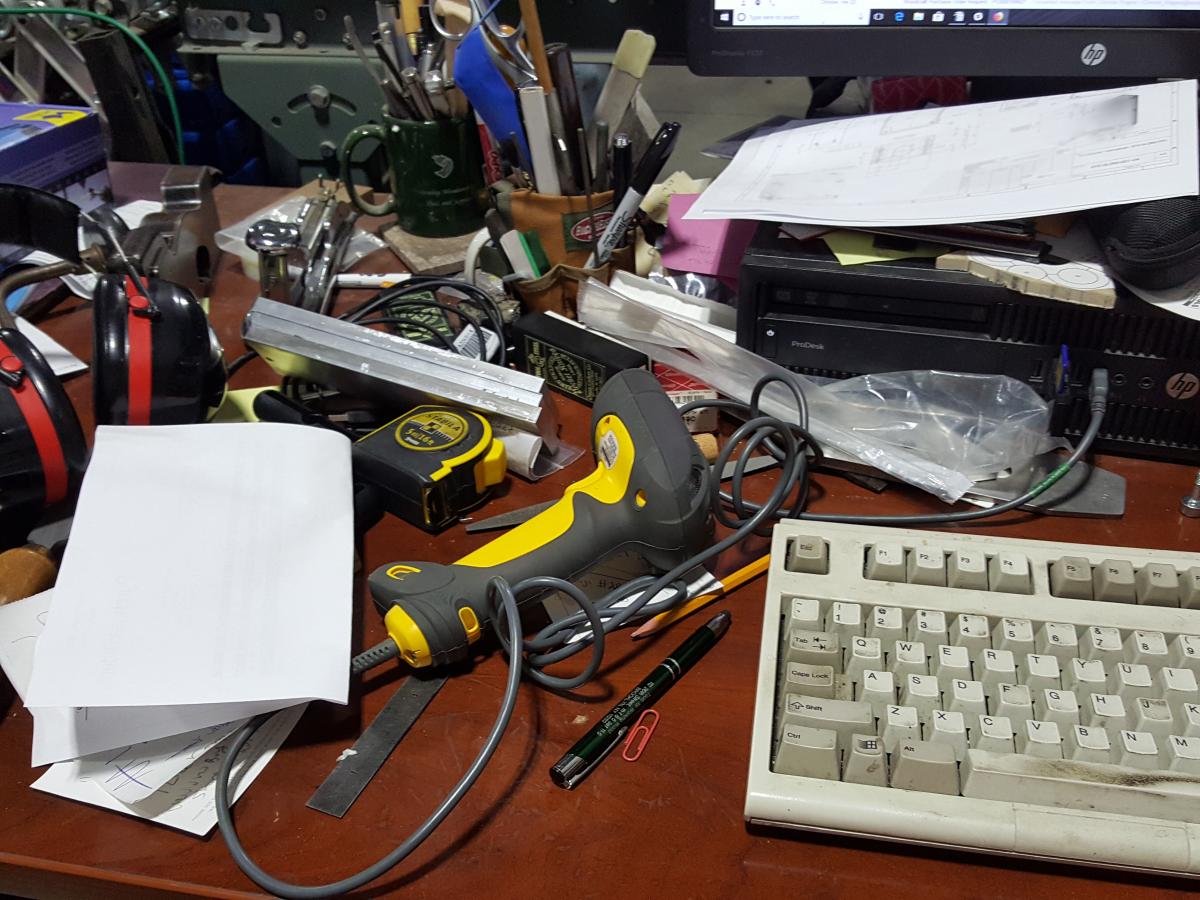
I have been self employed for twenty-two years and running Tools for Working Wood for just over nineteen. I recently saw an Instagram post by a woodworker (among other trade she practices) @anneofalltrades. In the post Anne expressed her worries about all the things that don't get done and how difficult it is get the tasks she wants done get done. So I decided to throw in my two cents and posted a comment. Some of the issues Anne raises involve setting boundaries with other people, but many of her issues are pretty common to just anyone running a business, especially a business where your labor is an integral part of production. The issues also affect hobbyists who are trying to build a serious project but simply are stymied by everything else in their lives.
My comment stemmed from a desire to help out. I certainly wouldn't say my method is the best or the only way of getting work done. But the techniques I describe below are practical. They make me more productive and able to get through the day without wanting to that the first one-way bus to the Bahamas.
The immutable facts of the case:
There are twenty four hours in a day. Doing nothing but work (+ eating and sleeping) isn't sustainable for any sane person - even if one enjoys their job.
We all have or need to have other commitments to spending time with family, friends, and just chilling. The guilt we feel about "wasting time" when we aren't working is real, but misplaced.
In addition and maybe more importantly, Anne touches on this, always feeling that you are not fulfilling your (self imposed) obligations can lead a feeling of helplessness, depression, and the feeling (totally unjustified) of failure.
I actually enjoy most of my day. There is just too much work in it.
My solution:
I keep two lists. My main list consists of everything I need to get done. The list has big projects on it - "Produce some new tools" - but overall I try to be pretty atomic in tasks: "Contact the guy in order 123456 and find out the problem." As I get closer and closer to doing the tasks, I tend to be more basic as I break things down. I also try to put in enough detail on the list so I don't waste time puzzling over what I mean. This last bit is especially important because putting something on the list isn't the same as getting it done, and some items stay on the list for years. This list has several hundred tasks and I refer to at least the more current parts of it on a daily basis.
But that doesn't get me out of my hole. It just defines the hole.
When I get something done on the list I cross it off.
Every day I make a the second list. It's a short list of what I actually think I can accomplish in a reasonable day. Late Friday I will probably make a list for what tasks I need to do for the weekend. I try to make this list realistic. My daily goal is to clear that list. If I do, I know I can relax and do other stuff for fun. If I don't, I know I am overcommitted. Over the years I figured out that the list needs to be pretty short, because during the day I will inevitably spend time chatting with customers, vendors, colleagues and or spend time on critical events. Meetings go on the list too. The list is very atomic. After I cross stuff out, I feel a real feeling of accomplishment and "permission" to have some fun. The day's work is done. When I don't finish my list, I start wondering about how to lower my deliverables through postponement, delegation, and any other strategy I can think of.
It's not a perfect system, but it has enabled me to relax without guilt, and focus on tasks that need to be done.
The worst thing you can do is not write down a list. Relying on your memory is not only iffy, it's real work. Who wants the stress of wondering if something important was forgotten? Without a list there is also just a formless, unending, overwhelming atmosphere sense of falling behind.
By the way, for long-term tasks I use Any.do and for the daily list I usually use a post-it at my desk. I go through a lot of post-its.
What does this have to do with woodworking as a hobby? you might ask. Simple: suppose you want to build a desk or another complex project. If you go into your shop thinking "What's next? I gotta build a desk!" it is easy to be overwhelmed. But if you go into your shop with a list saying, "I have an hour only. I will mill the wood for the drawers," you can actually get stuff done. You feel encouraged by what you're accomplishing, not discouraged having only one hour to spend. I have found written procedures for pacing a project very very helpful. Less stressful and more productive.
So that's my two cents. All I can say is that it works for me. It takes some discipline and sometimes I slack off. When I slack off I find my stress level increases. Less and less gets done and I complain more.
The picture above is a corner of my desk on April 24, 2018. It's not pretty. Cleaning it up is on my main list, but it's not anywhere near the top of my list. I do find that a clean desk helps me work faster, but I just don't know where to put half the stuff. It's a work in progress, and like the rest of us, I am still learning.
|
 Joel's Blog
Joel's Blog Built-It Blog
Built-It Blog Video Roundup
Video Roundup Classes & Events
Classes & Events Work Magazine
Work Magazine























I've never used a better system.
Unfortunately, Any.do doesn't have an API so there's no way for other services to interact with it.
I agree completely about getting stuff out of your head and on to paper. For most people, I'd also suggest separating ideas from actionable tasks -- basically, trying to avoid "idea debt": https://jessicaabel.com/idea-debt/. It sounds like you're thorough enough at prioritizing to maintain 1 list, but most people aren't. For the majority, a task that's as hard to act on as "Produce some new tools" won't go anywhere, and the first challenge is to get pie-in-the-sky stuff on to its own list (or Pinterest board, or iOS Reading List, or Dropbox folder, or whatever) so that the task list is only actionable stuff.
As you said, empty everything from your head onto “paper” so your mind is free to focus only on the here and now - especially if “now”is fun.
I highly recommend Stephen Covey's "7-Habits of Highly Effective People", and the corollary book "First Things First".